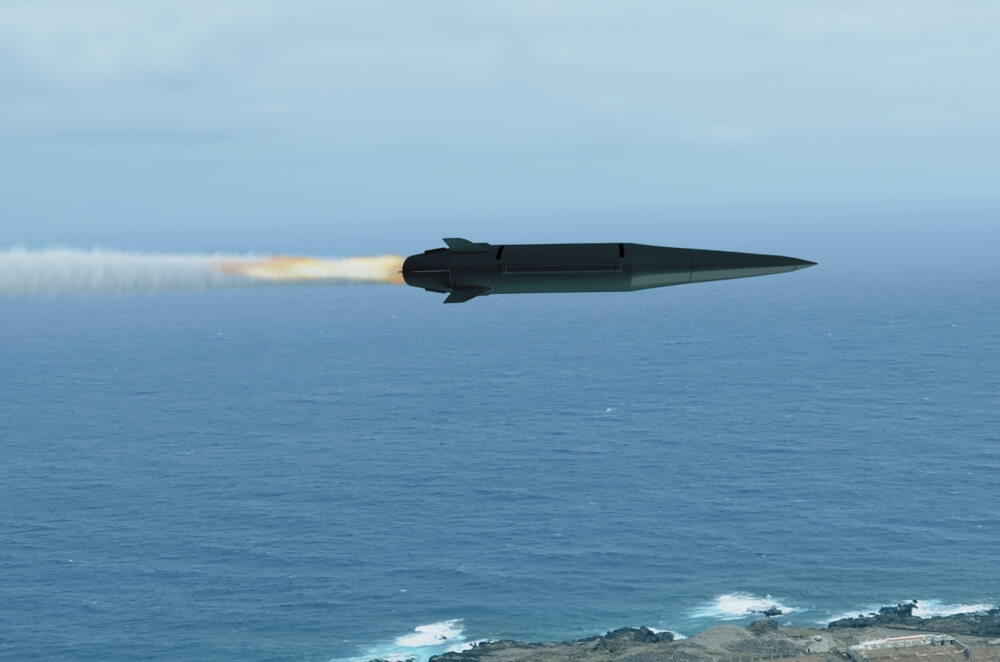The U.S. faces a watershed moment technologically and geopolitically, with advanced military capabilities such as hypersonic weapons rapidly maturing and influencing the broader strategic balance. As a result, the U.S. must conduct aggressive testing, particularly on hypersonic and counter-hypersonic weapons, and especially since U.S. adversaries have adopted precisely this mindset.
A risk-averse mentality that demurs on military development will lose the United States the next war.
Four years of avoiding risk
The Biden administration remained trapped in an escalation-averse strategic construct across the Eurasian landmass. In Europe, it begrudgingly and belatedly provided Ukraine enough support to survive against the Russian onslaught, but not enough to tip the scales decisively in Kyiv’s favor, leading to an open-ended stalemate absent a clear path that secures U.S. interests.
In the Middle East, it constantly circumscribed Israeli freedom of action, opposing at every turn the most strategically rational option for Jerusalem and Washington – direct pressure on Iran’s proxy network.
In Asia, the Biden administration took some steps to solidify U.S. partnerships. But it has refused to expand the military budget to resource a force that can deter and defeat Chinese aggression against Taiwan, or to integrate Taiwan into an American-backed regional defense system.
The second Trump administration inherits this unstable strategic environment, in which U.S. adversaries hope to press their advantages and solidify gains prior to another round of open contestation. The years between the fall of the Soviet Union and today were an interlude in a Cold War, which—dangerously expanded—pits the United States and a variety of partners on the one side against the authoritarian Eurasian Axis of China, Russia, Iran and North Korea on the other.
Weapons developments change history
It is common to explain U.S. victory in the Cold War’s first round through reference to American technological advantage. The United States developed the modern computing industry and modern space power, despite a Soviet lead in the latter, allowing it to create precise, integrated weapons that offset the USSR’s advantages in large-scale conventional forces and a robust nuclear force.
There is some truth to this, but it does not tell the full story The American strategic system was effective because it could leverage advanced technology and translate it into operational capability relatively quickly.
Take the pinnacles of Cold War aerospace engineering, the B-2 stealth bomber and F-117 stealth strike aircraft. Both programs stemmed from technological and scientific developments in airframe engineering in the 1960s and 1970s, namely the realization that the combination of new materials and a unique physical profile could greatly reduce the ability of hostile radar to detect an aircraft. A stealth aircraft could thus penetrate sophisticated, multi-layered Soviet air defenses, either suppressing these systems to enable non-stealthy aircraft to apply their combat power or attacking high-value nuclear and conventional targets in the enemy’s strategic depths.
Stealth technology itself, however, was only the first step. Stealth technology required several unique design features that greatly reduced the physical stability of an airframe, necessitating computerized flight controls that could make minute adjustments significantly faster and with greater precision than a human pilot.
Similarly, seemingly small design changes to reduce detectability demanded comprehensive engineering solutions – for example, air intakes redesigned to reduce heat generation ultimately triggered thorough airframe modifications. The U.S. combined these features, fielding the F-117 by the early 1980s and the B-2 by the late 1980s, both of which accelerated the Soviet Union’s collapse by their very existence. In all, both programs took around 15 years from initial conception to deployment.
What it will take to win
Winning the renewed Cold War will require a similarly diverse suite of advanced military capabilities, which integrate a few technical advances to ensure operational effectiveness. Civilian-grade equipment will matter, but ultimately the implements that define a combat system will be bespoke military gear, as Ukraine’s experience has reminded the watchful observer of combat patterns.
Foremost among the advanced capabilities that the U.S. must aggressively pursue are hypersonic weapons. Whether as glide vehicles mounted on ballistic missiles or as cruise missiles, hypersonics combine high speed – flying at over one mile per second – with extreme maneuverability toward their target. They are so sought after by the major powers because once the technology is developed sufficiently, the weapons can overwhelm even the most sophisticated air defenses.
Fielding a mature hypersonic weapon takes an extraordinary amount of engineering focus. The speeds of hypersonic flight at five times the speed of sound mean that standard aerial friction becomes a direct threat to the structural integrity of the projectile. Hence, hypersonic development has taken decades, with current platforms using insights from tests in the early 2000s.
The engineering difficulties in hypersonic development apply equally to counter-hypersonic systems. Intercepting a weapon traveling at hypersonic speeds and with extreme maneuverability is no easy engineering task either. For both hypersonics and counter-hypersonics, live testing is crucial. It is the only way to understand the shortcomings of a proposed design, then modify the weapon or interceptor, and test again to see other potential issues.
U.S. adversaries are testing and deploying hypersonics aggressively. China has had operational hypersonic glide vehicles since the late 2010s, and per leaked US intelligence assessments, has tested hypersonic glide vehicles aggressively, with a notable test in 2023.
Russia’s test information is harder to come by, but the Russian aerospace forces have employed hypersonics against Ukraine since 2022. Russian and Chinese counter-hypersonic testing is less clear, but the more operational data Beijing and Moscow gather, the more capable they will become of developing more swiftly a larger number of capable hypersonics and interceptors.
The U.S. is far behind
By contrast, the United States refuses to fund hypersonic interceptor programs enough to enable large-scale, frequent testing for development and deployment. Hypersonic and counter-hypersonic tests have been few and far between – in 2024, the U.S. only tested its long-range hypersonic weapon twice, after several years of delays.
This aversion to testing stems from Pentagon and public cultural perceptions. The mentality is that a test is only valid if the system works. Hence, Department of Defense contractors and the Pentagon itself are dissuaded from testing early and often, depriving them of crucial operational data that will influence weapon design over time.
The next three annual defense budgets will be critical for hypersonic and counter-hypersonic systems given the acceleration of both technologies and the reality that U.S. adversaries are fielding hypersonics in increasing numbers.
Seth Cropsey is president of Yorktown Institute, a think tank focused on national security. He served as a naval officer and as deputy undersecretary of the Navy. He is the author of “Mayday” and “Seablindness.”







